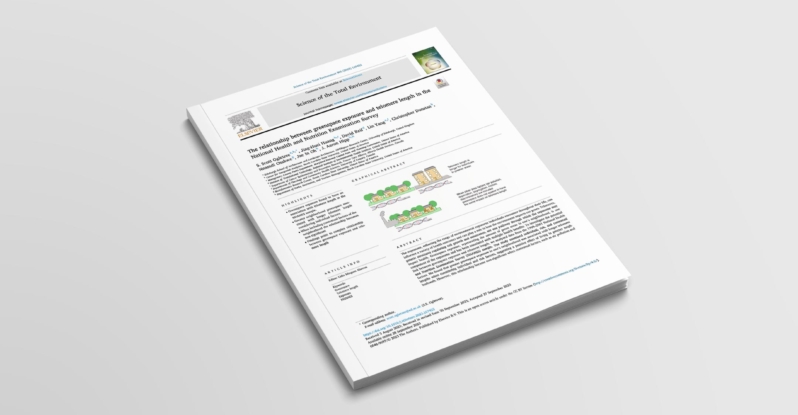Fast Facts
- The City of Austin was one of seven cities nationwide selected in 2016 to receive a planning grant from the national Cities Connecting Children to Nature (CCCN) initiative.
- The initiative—a partnership of the National League of Cities’ Institute for Youth, Education, and Families, and the Children & Nature Network, seeks to create more equitable and abundant access to nature in cities.
- The grant funded a strategic planning process that brought together cross-sectional representatives from ten city departments, the Austin Independent School District, the public health community, and nonprofit organizations to ensure access to nature is considered and embedded across city planning efforts.
- Austin’s city leaders created an implementation plan to provide abundant and equitable access to nature with a specific focus on children in low-income communities, and children of color.
- Extensive research and mapping was conducted to identify areas of Austin with the largest gaps in nature equity.
- This informed the selection of areas where priority implementation strategies are now focused.
- Priority implementation strategies include: greening school yards, a public awareness campaign, creating a comprehensive nature-based program directory, aligning programs with available park space in neighborhoods, and developing nature access policy initiatives for inclusion in city development codes and master plans.
- The City of Austin was awarded additional funds to execute the plan.
- Now elementary students who attend Austin public schools are required to receive 30 minutes of unstructured recess every day, on top of 135 minutes of weekly structured playtime mandated by the state.
- Momentum continues as Austin builds a strong network of organizations, governmental departments, healthcare professionals, and educators dedicated to the idea that children who have regular access to the natural world are healthier, happier, and perform better in school.
Cities Connecting Children to Nature (CCCN) is a national initiative that seeks to create more equitable and abundant access to nature in cities through a partnership between The National League of Cities Institute for Youth, Education, and Families and the Children & Nature Network.
In March of 2016, the City of Austin was one of seven cities nationwide selected to receive a planning grant from the national initiative. It brought together representatives from ten city departments, the Austin Independent School District, the public health sector, and nonprofit organizations to identify ways of providing abundant and equitable access to nature for its children of Austin, with a specific focus on children in low-income communities and children of color.
This cross-sectional planning process yielded the following long-term goals:
- Every child has abundant and equitable access to nature at their home, neighborhood, and school.
- Every parent, health professional, and teacher has been exposed to the importance of spending time in nature for a child’s healthy development.
- Every child considers outdoor play a top option in their free time.
- City codes and school curricula allow and encourage kids to play outside in nature more frequently.
- Austin is seen as an innovator and leader in the Children and Nature Movement.
- Kids choose nature.
Extensive research and mapping was conducted to identify areas of Austin with the largest gaps in nature equity. This informed the selection of areas where priority implementation strategies are focused.
Austin is now gaining considerable momentum by building a strong network of organizations, governmental departments, healthcare professionals, and educators dedicated to the idea that children who have regular access to the natural world are healthier, happier, and perform better in school.
The Austin Independent School District (AISD) established a full-time Sustainability Manager and Outdoor Education Specialist, and adopted a policy mandating that all elementary school students receive 30 minutes of unstructured outdoor playtime each day.
Elementary students who attend Austin public schools are now required to receive 30 minutes of unstructured recess every day, on top of the 135 minutes of weekly structured playtime mandated by the state.
Priority implementation strategies include: greening school yards, a public awareness campaign, creating a comprehensive nature-based program directory, aligning programs with available park space in neighborhoods, and developing nature access policy initiatives for inclusion in city development codes and master plans.
School District leaders set a requirement for themselves around school parks and playgrounds and per a construction bond passed in 2017 they must create an outdoor learning space anytime a new school or renovate an existing building is built.
At the forefront of these efforts is a pair of “green school parks” that the district and the city built on jointly owned land at two elementary schools. The first park, which opened in March 2018, was created at Barrington Elementary School, after the district identified the neighborhood as having insufficient access to nature. The second school identified was Wooldridge Elementary School. Sharing the spaces with communities creates a strong connection between families and their schools. The city’s parks and recreation department installed a nature trail, wildflower meadow, vegetable garden and other features. To celebrate opening the park, the school planted trees campus-wide. Austin ISD’s vision for outdoor learning is more than just “having an outdoor classroom or a seating area under trees.”
The outdoors is being used as an interactive teaching tool across every content area. For example, a class could go outside to read a book about pollinators and then search for the insects. Students could also make a graph of pollinators for a math assignment.
Collection and promotion of park programming, design, and marketing stories is sponsored by:




